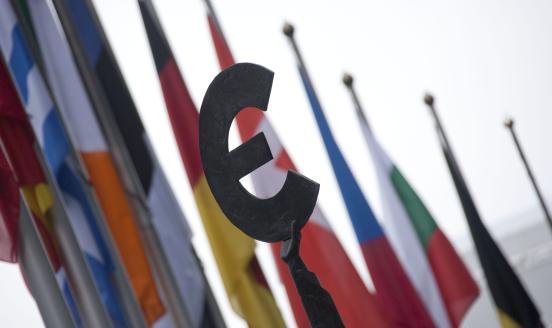How to design a banking union that will save the eurozone
To stop the doom spiral that threatens the eurozone, European leaders must now repair the serious flaws in the design of monetary union that have be
A version of this column was also published in the Financial Times A-List
To stop the doom spiral that threatens the eurozone, European leaders must now repair the serious flaws in the design of monetary union that have been revealed by the crisis. At the very least, at this week’s summit of European leaders, they should recognise them, name them, agree on directions for reform, and set a timetable for decisions.
Banking union — the move to a common regime for supervision, deposit insurance and resolution — has emerged as a key component of such a repair strategy. The idea makes sense because it addresses the feedback loop between sovereign weakness and banking weakness. The concept has been endorsed by several eurozone governments (including France who used to be lukewarm about it), by the European Central Bank and the European Commission, by the UK (provided it is not asked to take part) and by the International Monetary Fund. Germany has reservations, but they do not seem to be absolute.
There is however distance from concept to realisation. A banking union entails many choices.
First, who should participate? The EC wants a banking union for the whole of the EU but it is not going to happen. The case for it may exist, but it is overwhelming only for the participants in the euro. Transitional arrangements should be found for countries that intend to join the common currency, such as Poland.
Second, which banks should it cover? It would be simpler to limit it to systemic banks with cross-border activities. But the Cajas at the core of the Spanish crisis are small and domestic. For the banking union to alleviate the fiscal risk, it must be broad in coverage, possibly universal.
Third, who should supervise? Different countries have relied on different models, but there is a strong case for centring supervision at the ECB, which has both legitimacy and effectiveness.
Fourth, what resolution authority should be granted? Bank resolution involves allocating losses between stakeholders. These are intrinsically political choices that cannot be assigned to a central bank. It would be best to create a resolution authority under the umbrella of the European Stability Mechanism.
Fifth, what sort of deposit insurance? A benefit of banking union would be the pooling of insurance. Again, however, there are various ways of doing it, from complete federalisation like in the US to the reinsurance of national systems by a common fund.
Sixth, what sort of fiscal backstop? Banking crises are costly – sometimes horribly so. Even if losses are imposed on shareholders and creditors, they can easily exhaust insurance funds. It is important to make sure that when the accident happens, money is not only theoretically but actually available. There is therefore a need for a fiscal backstop – in other words some degree of fiscal union.
Seventh, what form of governance and accountability? A banking union is an off-balance sheet fiscal union and as such it needs to be underpinned by a form of political union. Taxpayers cannot be asked to commit to put up potentially large amounts of money in the absence of institutions that provide legitimacy.
Moving to a common banking union is a delicate transition. As soon as the possibility arisis to mutualise future losses, states will have an incentive to conceal problems. Here, clarity should prevail: the transfer of supervisory competence to the European level should be preceded by a comprehensive, thorough and intrusive screening of banks conducted by a special task force. All legacy costs uncovered in this assessment should be taken on by current authorities, unless they are or are at risk of being fiscally unable to bear them. In this case, but in this case only, there will be a case for mutualising risks in the form of direct capital injection by the ESM.
This piece is based on a joint Bruegel report with André Sapir, Nicolas Véron and Guntram Wolff.



